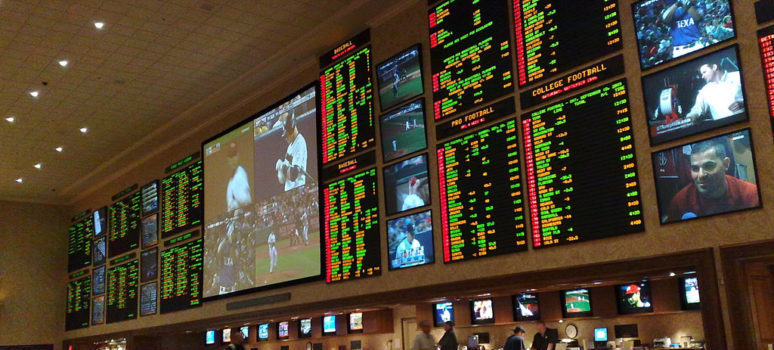New to sports betting or need a quick refresher on money lines and how they work? It’s the most basic bet you can make. You are simply placing a wager on which team/player will win a specific game or match.
It’s one of the three basic ways to bet on sports. The other two are the point spread and total.
With the point spread, the books set a line on the game and you have to decide if a team will beat that number. The total is an over/under proposition, where you pick if the two teams (combined) will exceed the number or not.
At first, you might think moneylines are the way to go. It is a lot easier to predict a team to just win the game than to worry about how much they win or lose by. You just have to come up with a good idea of what percentage chance a team has of winning and convert that to a money line number.
To understand why it’s difficult to profit from long-term betting just the winner, we need to get a full appreciation of how the odds work.
Understanding How Money Line Odds Work
First things first, you need to get familiar with how the betting lines are presented. Oddsmakers will list who they feel is the favorite in a game/match with “-” odds and the underdog at “+” odds.
Second, you need to understand that the payouts are going to vary quite a bit. It’s not something where you can bet $100 on the favorite and win $100 back.
When you see “-” that means you are going to have to risk more than you win, while with “+” odds you risk less than what you will win.
The bigger the favorite the more you will have to risk to earn back your initial wager. Let’s say a team is listed at -140 on the moneyline. That means you have to risk $1.40 for every $1 of profit. Which is the same thing as risking $140 to win $100.
That’s really the basic principle you need to remember. If a team is -315. You now would have to risk $315 to win $100.
It’s the opposite for underdogs. If a team was at +140, that means you only have to risk $1 to win $1.40 or $100 to win $140.
The key thing to keep in mind is that the payouts are constant regardless of how much you bet. To figure out the exact amount of risk/return, just divide the moneyline by 100.
So if it’s -240, you take -240/100 and that gives you -2.4. That means you have to risk 2.4x as much as what you would win. So if you wanted to know how much you would need to risk to win $50. You just take 2.4 x $50 to get $120.
For underdogs, you are focusing on the return based on your wager. If the odds were at +460. This means you would get 4.6x (460/100) for every $1 wagered. If you bet $50, you would return $230 (50 x 4.6).
Why It’s Difficult to Profit in Football & Basketball
Both football and basketball are sports that typically don’t see a ton of wagers on the money line. That’s because the books make you pay such a premium, it forces you to hit at a ridiculously high percentage to show a profit.
It gets even harder when you get to the bigger favorites. Upsets are going to happen and one loss could cripple your bankroll.
For example, say the Patriots are hosting the Raiders. Clearly, there’s a good chance that New England will win the game at home.
However, it will cost you a pretty penny for a small return on your investment. Say, the Patriots are a 10-point home favorite, that would have them listed at roughly -700 on the moneyline.
That means you would have to risk $700 to win $100. Even if you predicted a winner in this scenario 6 out of 7 times, that one loss would actually have you down $100. (Win $600 on 6 winners and lose $700 on the 1 loser).
You might be thinking that underdogs are the way to go. That’s not quite the case.
While you will get a much higher return on your investment, the odds aren’t the same both ways. In the same example from above, where the Patriots were a 10-point favorite at -700, the Raiders as a 10-point underdog would be roughly +480. A $100 wager on the Raiders at +480 would net you a return of $480.
The problem here is that it’s extremely difficult to predict when a big dog like this going to win outright. Not to mention the sick feeling you have when an underdog doesn’t win the game but covers the spread.
Moneyline Specific Team Sports & Individual Matchups
You should by now understand why it’s better long-term to focus on the spread instead of the money line with football and basketball.
However, there are some sports where the best option is on the moneyline. The most common sports are baseball, hockey, and soccer.
There are simply not enough runs/goals scored on average to set a realistic line for every game. The money lines in these sports are not as drastic as what you would see in football or basketball. Fewer runs/points allow for more unpredictability in the final outcome.
There are other sports where moneyline-based odds are used. Most of these involve a head-to-head matchup of individuals, not teams.
Boxing/UFC, Tennis and golf matches are a few of the most common types of these wagers.
However, you can also have point spreads in these sports. Check out our guides on run lines and puck lines for more.
Popular Moneyline Betting Sports
More Sports Betting Related Articles


